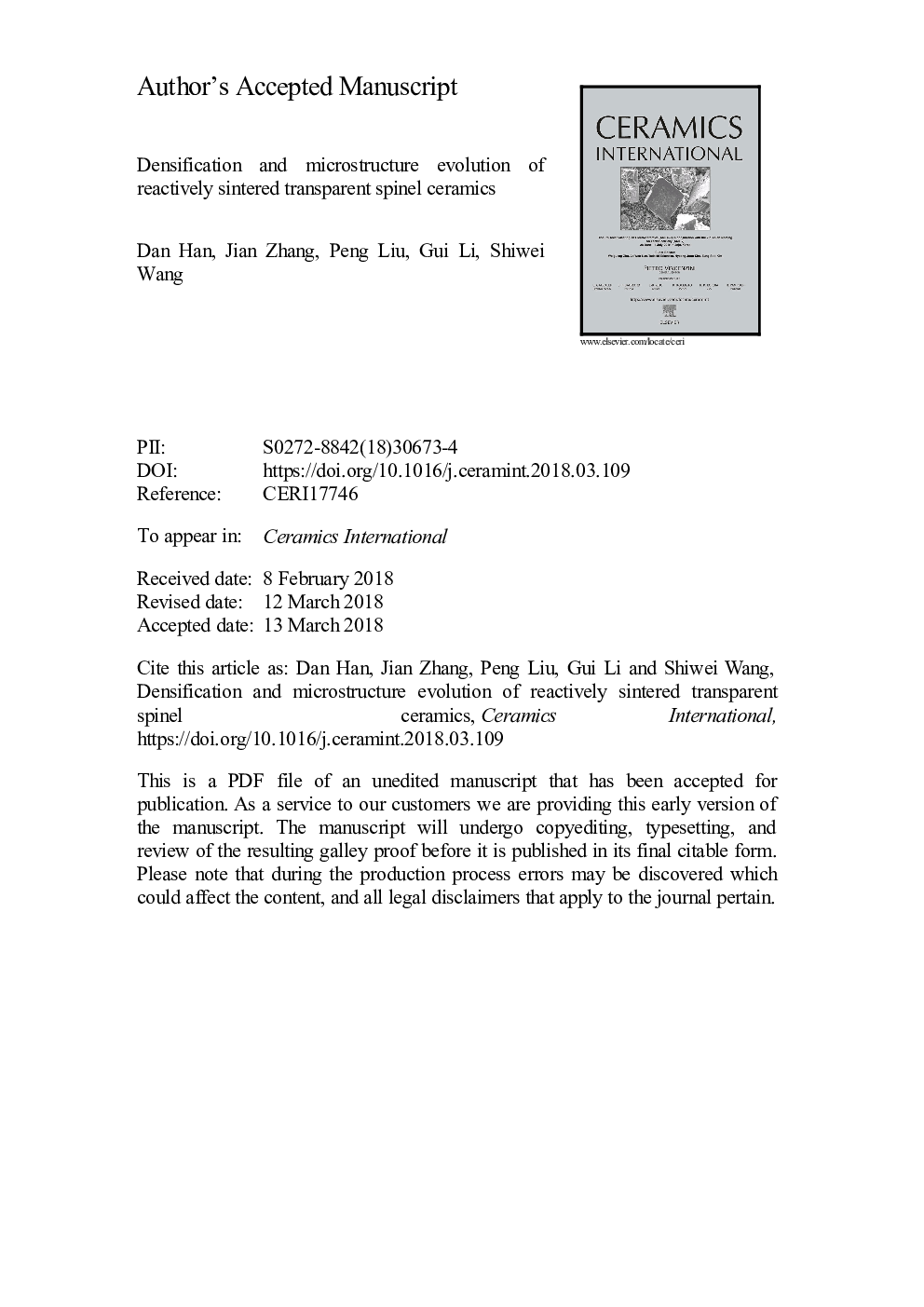| Article ID | Journal | Published Year | Pages | File Type |
|---|---|---|---|---|
| 7886776 | Ceramics International | 2018 | 25 Pages |
Abstract
Reactive sintering is an effective and simple method to prepare transparent spinel ceramics. In this research, transparent MgO·nAl2O3 (0.98â¯â¤ nâ¯â¤â¯2) spinel ceramics were prepared via reactive sintering in air followed by hot isostatic press (HIP), using MgO and γ-Al2O3 powders as raw materials. The influence of composition on densification and microstructure evolution was systemically investigated. More importantly, the relationship between microstructure of presintered samples and final properties of transparent ceramics was singled out. Thermodynamically stable large pores were easily generated in magnesia-rich and stoichiometric samples after presintering in air, causing severe abnormal grain growth during the HIP treatment and poor optical quality of the resulting samples. The presintering temperature of alumina-rich samples widely varied with composition. No large pores were observed in the presintered sample, which was beneficial for the elimination of residual pores in the following HIP process. Highly transparent spinel ceramics with nâ¯=â¯1.1 and 1.3 were successfully fabricated with the transmittance above 84% even at the short wavelength of 400â¯nm, close to the theoretical value.
Related Topics
Physical Sciences and Engineering
Materials Science
Ceramics and Composites
Authors
Dan Han, Jian Zhang, Peng Liu, Gui Li, Shiwei Wang,
